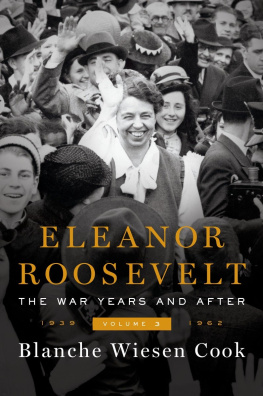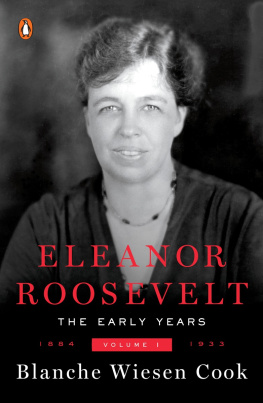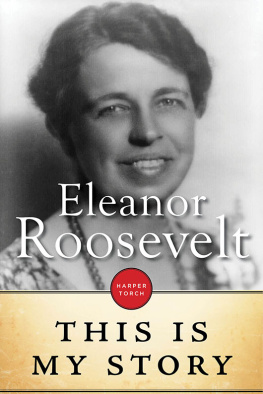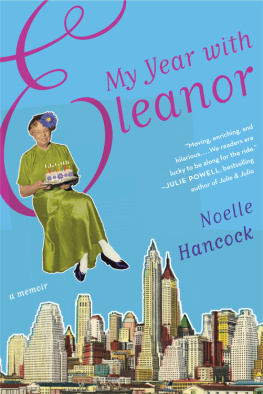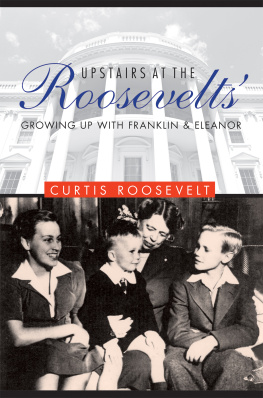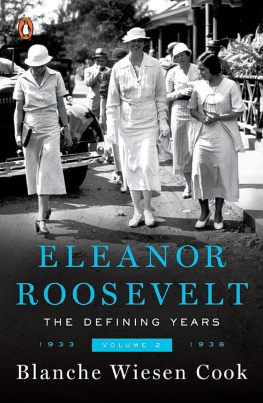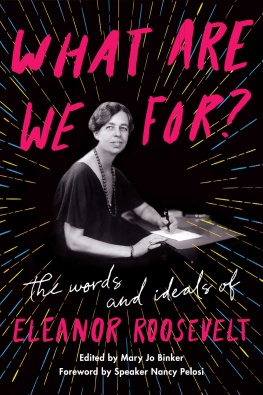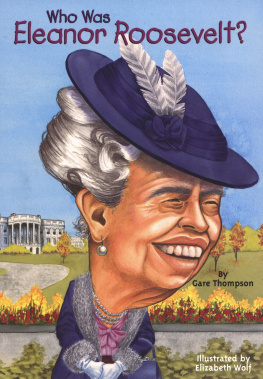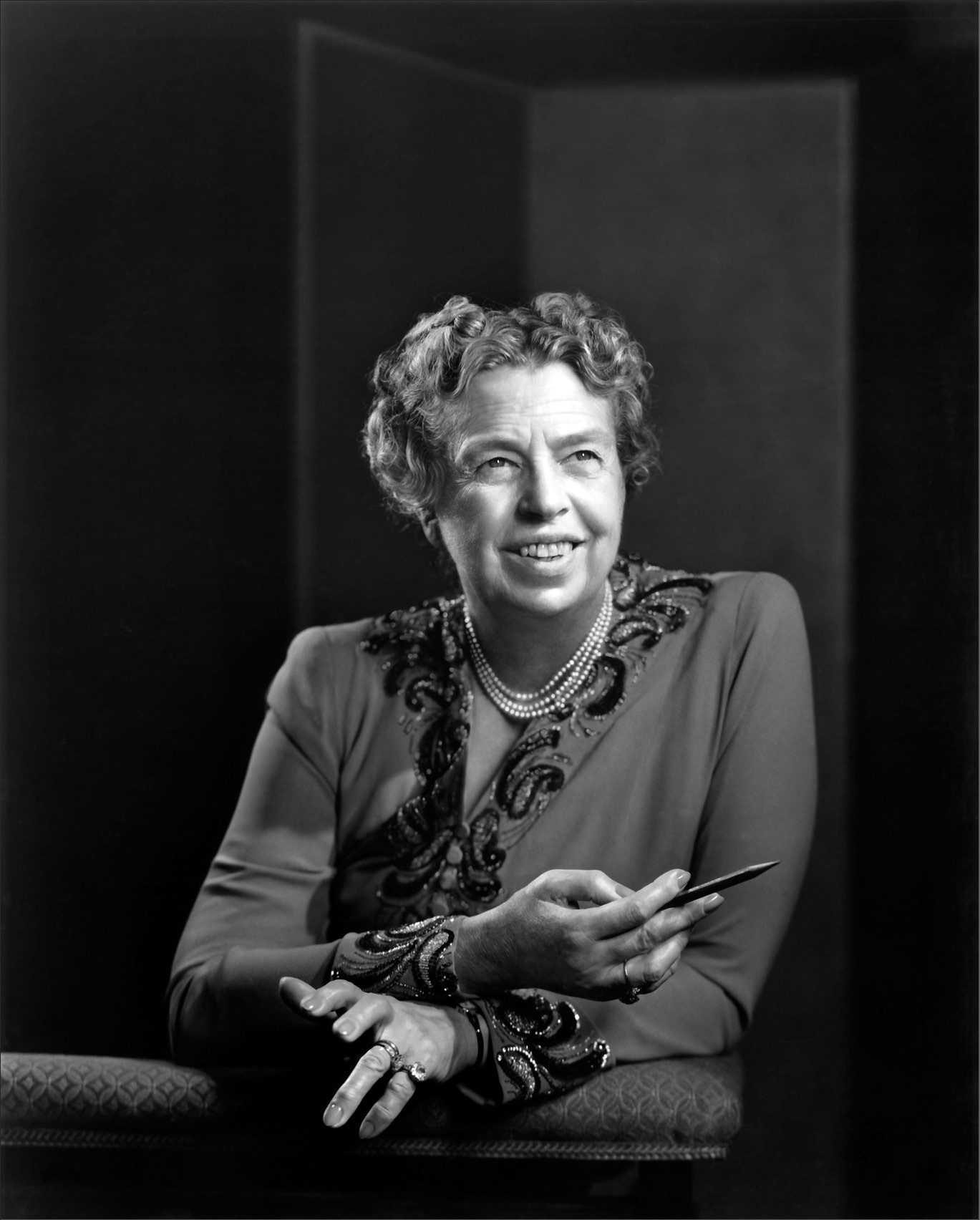Penguin supports copyright. Copyright fuels creativity, encourages diverse voices, promotes free speech, and creates a vibrant culture. Thank you for buying an authorized edition of this book and for complying with copyright laws by not reproducing, scanning, or distributing any part of it in any form without permission. You are supporting writers and allowing Penguin to continue to publish books for every reader.
Preface and Acknowledgments
Eleanor Roosevelt never stopped growing and changing, organizing and inspiring. Called a woman for all seasons, she generated movements for peace and freedom, for human rights and dignity, worldwide. Throughout my journey with ER I have been fortunate enough to be part of many movements inspired by her vision and legacy. This study could not have been completed without the individuals who have illuminated my understanding and enriched my life. Above all, in our lives committed to activism and creativity, Clare Cossmy primary coconspiratorhas profoundly broadened my understanding and contributed dramatically to every aspect of this work. We first met at a Womens International League for Peace and Freedom meeting in 1966, to organize protests against the war in Vietnam. Since then, the women of WILPF and the global womens peace and human rights movement have been central to my work.
In June 1988, I was privileged to be part of a U.S . delegation to the First International Conference on Women, Peace, and the Environment in Moscow. The conference, sponsored by the Soviet Womens Committee and comprising representatives from over twenty-four nations, occurred while the democratic changes of perestroika and glasnost were getting under wayshortly after the ecological tragedy of the Chernobyl nuclear power plant. The conference was a harmonic convergence that confronted the dire facts of radiation poisoning, militarism, and the ongoing drilling and dumping of industrial toxinsand sought ways to pursue international paths to ecology and health. The Green Party activists, Friends of the Earth, and various peace groups at that meeting were in unanimous agreement: The environment has no borders, and, in the words of Cora Weissthen the international coordinator of SANE/Freezea world without waste is a world without want or war. The conference resulted in permanent friendships and new networks of activism to pursue specific goalsall of which are more urgently needed than ever.
Shortly after that meeting, Bella Abzug and Mim Kelber founded WEDO, the Womens Environmental and Development Organization, to save Mother Earth from pollution and poverty. From 1990 on, the women of WEDO , representing fifty-four nations, worked at the UN and transnationally to create an Earth Summit and build a global sisterhood for justice and peace. With Charlotte Bunchs extraordinary team at the Center for Womens Global Leadership at Rutgers University and many allied groups around the world, the campaign for Womens Rights as Human Rights was under way. Bunchs work continues to flourish, and the CWGLalong with AWID, DAWN, MADRE, NESRI, Outright, and such organizations as Urgent Action Fundis bringing healing and hope to people across this planet, where currently 64 million refugees face a frightening future.
During the UN decade devoted to women and change, I worked with my U.S. friends and Margarita Papandreous team of activistsunited in Women for a Meaningful Summit, followed by Women for Mutual Security. The inspiring first lady of Greece patterned her career after Eleanor Rooseveltwhose spirit was entirely present during our Moscow discussions and in our subsequent meetings. I am forever grateful to Margarita, and to Leonore Forestal and Hilkka Pietil, then secretary general of the Finnish UN Association and subsequently author of Engendering the Global Agenda: The Story of Women and the United Nations (New York: UN Non-Governmental Organization Liaison Service, 2002), a book that is basic to our understanding of the work of these NGOs and the UN.
Many friends have offered hospitality and insights through the many years of my ER research. I continue to be grateful to those named in Volume s I and II, and I apologize for names involuntarily omitted. I am thankful to Celia Morris, in Washington, D.C.and to her friends in Houston, Bill and Diana Hobby. Bills memories of his mother, Oveta Culp Hobbya life member of the NAACPchanged my understanding of her many contributions, from World War II to Eisenhowers cabinet, in which she served as the first secretary of the Department of Health, Education and Welfare.
In Arizona, Esther Lapes friends Harold Clarke and Burt Drucker were fountains of information, and gifted me with several boxes of Lapes papers, including correspondence with ER, which will go to the Franklin Delano Roosevelt Library (FDRL) in Hyde Park. Also in Arizona, Clare and I enjoyed hospitality and conversations with Annette Kolodny and Dan Peters, and with Judith McDaniel and Jan Schwartz; and in Cambridge, Massachusetts, with Betty Burkes and Cathy Hoffman. Amazing times were spent at Bernard Baruchs Hobcaw Barony in Georgetown, South Carolina, to launch SCETVs interactive Web site Between the Waters. Project director Betsy Newman and the Belle Baruch Foundation hosted splendid conferences highlighted by discussions of race and change, informed by scholars and such notable former residents as educator Minnie Kennedy.
A unique weekend in Skowhegan, Maine, with Senator Margaret Chase Smith expanded my understanding of ERs partisanship. Because Id been invited to be the third Margaret Chase Smith Lecturer, the senator wanted me to know when her friendship with ER ended. On 4 November, the Sunday before the EisenhowerStevenson election of 1956, they were the first women ever invited to debate the presidential election on national television. Pleased to be part of ERs press conferences, although she wrote only a weekly column for her local paper, and subsequently allied on many issues, Senator Smith, a liberal Republican, considered ER a friend. She was mostly subdued, and ER dominated the debate until she denounced Eisenhower for his opposition to the Suez Crisis, and his efforts to get Israel, Britain, and France to withdraw from their invasion of Egypt. She accused Eisenhower of supporting the Kremlin and an Egyptian dictator against our oldest and strongest allies. Shocked, Senator Smith countered that Eisenhower was a patriot who did not support Communists, Nasser, or dictatorship. He sought to avoid World War IIIwhich indeed seemed imminent. ER rejected Smiths words and shouted that Eisenhower was Weak! Weak! At the end, she refused to shake Margaret Chase Smiths hand, turned her back, and stormed out of the studio. They never spoke again. I knew how competitive ER was; but until this conversation, I did not realize she could be rude.

